In case you have played Pokemon Go, you will agree how insanely addictive the game is. The AR based game reached the top of all major app stores within a week of its release.
This repetitive engagement is one of the major advantages of the technology. And isn’t continuous engagement an effective advertising method for businesses?
AR in marketing is not a new thing. It’s already driving customer satisfaction amongst brands such as Ikea, Cadbury, etc. So, if you think it’s high time your business starts working on this space, then you have landed at the right place.
In this guide, we will talk about everything that you need to know about augmented reality in marketing for your retail business.
Table of Contents
- What is augmented reality?
- Augmented reality in marketing
- The rising trend of Augmented Reality in Marketing
- Reasons to adopt AR marketing
- The future of AR Marketing.
- 7 Benefits of Augmented reality in marketing
- Getting started with AR app development
- Monetization using AR
What is Augmented Reality?
Augmented reality is an ability to add digital elements to perceive a live experience or view with the help of a camera. It may or may not interact with those elements of the live view. This powerful technology holds substantial marketing opportunities and enhances brand value. This makes it essential for marketers to consider and use it as a part of their marketing model.
Augmented Reality in Marketing
Augmented Reality in marketing is a way for brands to communicate with their target audience using interactive content through their mobile applications. From clothing to home-building, the concept of AR marketing is becoming increasingly popular.

The rising trend of Augmented Reality in Marketing
The popular Pokemon Go gaming app was the first encounter with Augmented reality, for most of us. Augmented reality however is slowly taking places in the other industries as well. These days it has expanded to other industries like health care, books, and the most important of all – augmented reality ecommerce.
According to a survey, the likelihood of a successful online sales conversion is about 40% if offered through an augmented reality experience. The sole reason behind this is the customers’ readiness to customize and personalize their shopping experience using AR.
About 63% of customers believe that augmented reality in marketing adds value to their shopping experience. On the flip side, traditional retail stores, who lack the competitive advantage of providing an AR experience are likely to see a decrease in their overall customers. If we talk about the ecommerce industry, then AR integrations have helped businesses reach major milestones in the last half a decade.
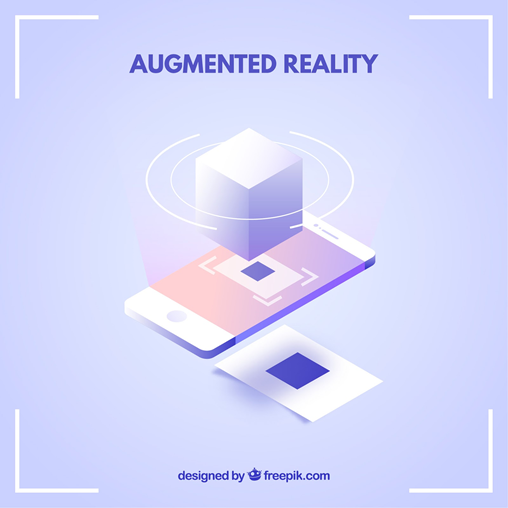
Do you have an idea to build an AR app for marketing? Let’s connect to discuss the possibilities of entering the augmented business world. We can help you create a complete strategy to build such an app.
Reasons to adopt Augmented Reality in Marketing
Let us now learn about a few reasons to adopt Augmented marketing by taking augmented reality marketing examples of different companies.
1. It Lets your customers visualize their purchase
The biggest benefit of augmented reality is that customers get a personalized touch. Imagine, buying an apartment and then modifying it according to your needs. Sounds tedious right? But with AR you can do the modifications before buying. By visualizing what the apartment would look like, your customers can plan the furnishing, coloring, layouts, and more ahead of the time and that too before making any big purchases.
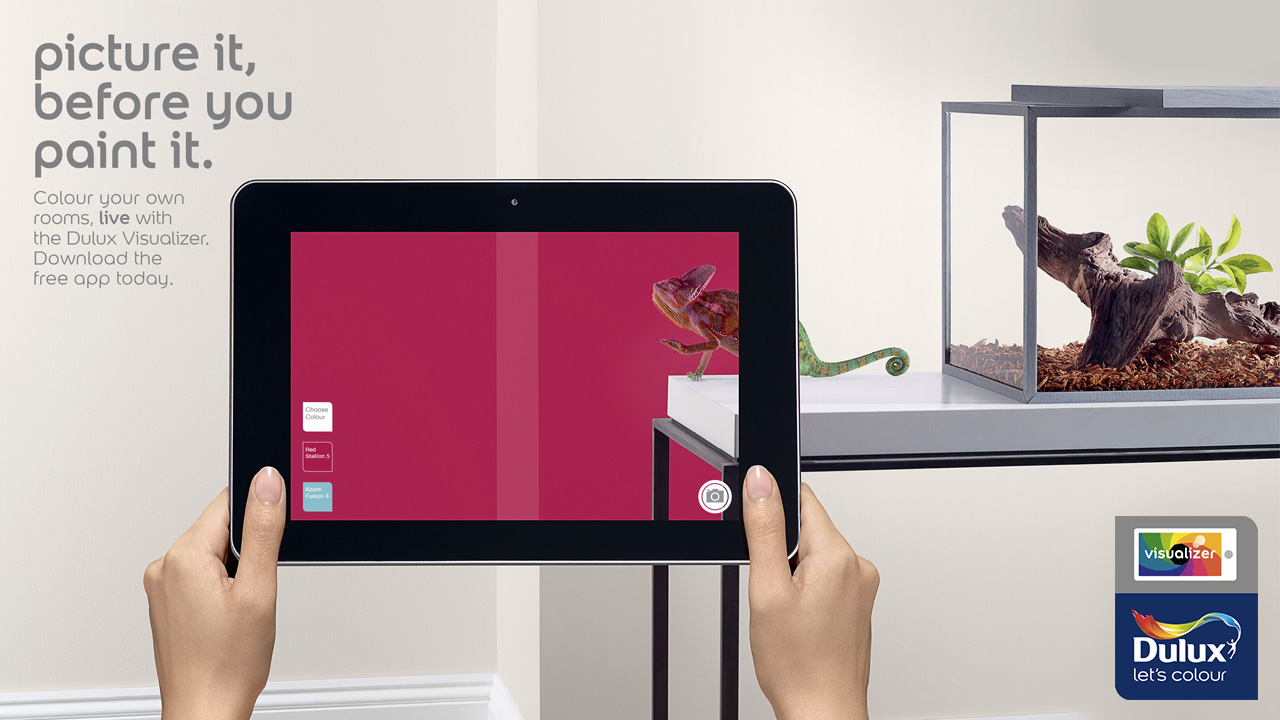
For instance, home interior app Dulux visualizer uses AR in an effective way. Like other apps, this app too uses a smartphone. It detects wall surfaces and edges to let users select specific areas that they want to paint. They can easily visualize how their wall will look when painted in different colors.
2. Enhance Shopping Experience
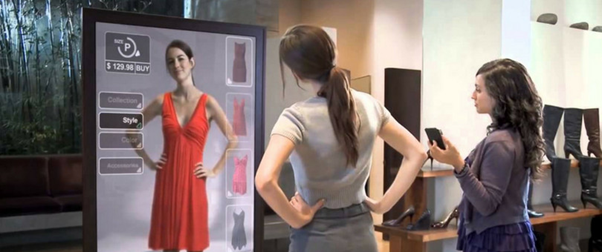
Certain brands have already implemented this model in their e-stores. Sephora’s Virtual Artist app is one such fantastic app for online beauty shoppers. It allows users to try out different lip colors, eyelash thickness, eyeshadow, and cheek colors to let them decide what looks good on them.
Adidas is another brand that uses AR for try-on purposes. It partnered with Snapchat to AR lens that allows users to virtually view the running shoes.
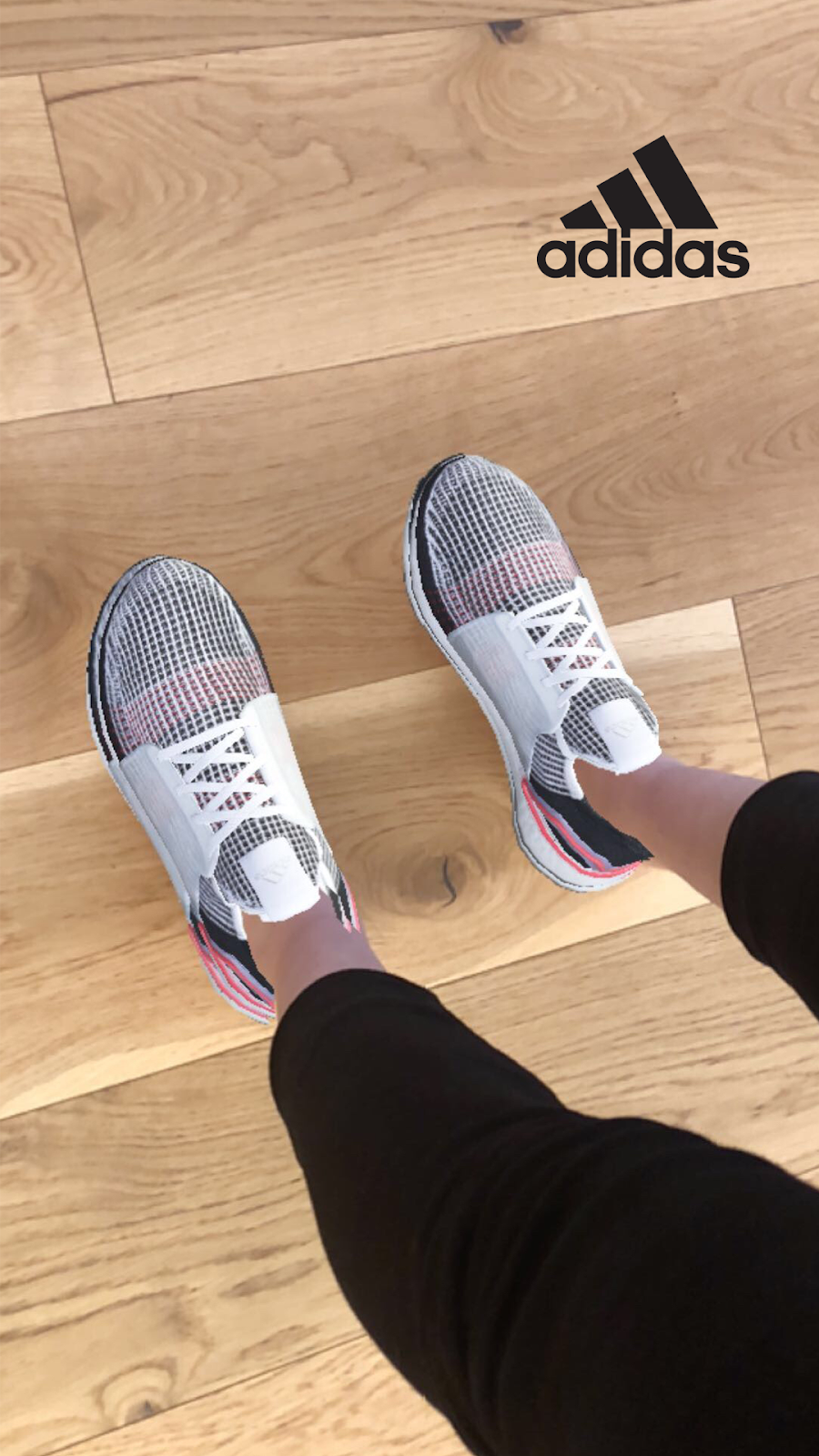
Want to know more about how the try-on feature can work in your retail business? Our team will give further details.
3. Augment Touring and Assistance
AR, in this regard, stretches into either giving additional information about the product or some sort of supplemental brand-related experience. For example, StubHub, a ticket-sales company, created an AR app that allowed customers to view a 3D display of the stadium where a game was played. Customers were able to visualize the look of the field from various seats to choose the right one for them.
Starbucks also digitized the experience of touring one of their shops with an AR app. It allowed users to access and scan objects within the shop and have a virtual tour.
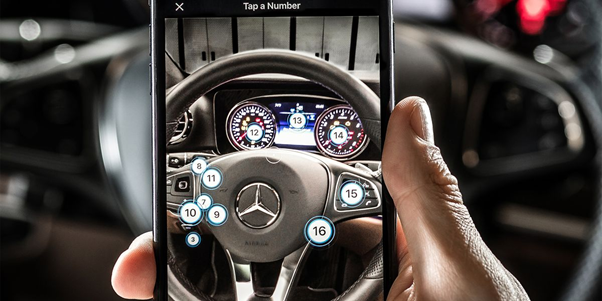
A lot of companies are using AR to help customers with in-store navigation. For instance, home improvement chain Lowel has an AR app. This app creates a virtual path to help customers reach the chosen product.
4. Augmented Reality for B2B boosts Sale
In the Business-to-Business (B2B) world, augmented marketing has brought massive changes in how a consumer buys and interacts with products and services. Many of the concepts mentioned above are also relevant in the business sales space. These apps, when used correctly, have the potential to transform marketing and support. The implementation of AR reduces costs, increases sales, and has a significantly positive impact on ROI.
In the usual concept of business sales, there is no replacement for a good sales pitch between a salesman and the decision-makers. AR brings an entirely new dimension to this concept. It gives the clients a new way to interact with the products or services.
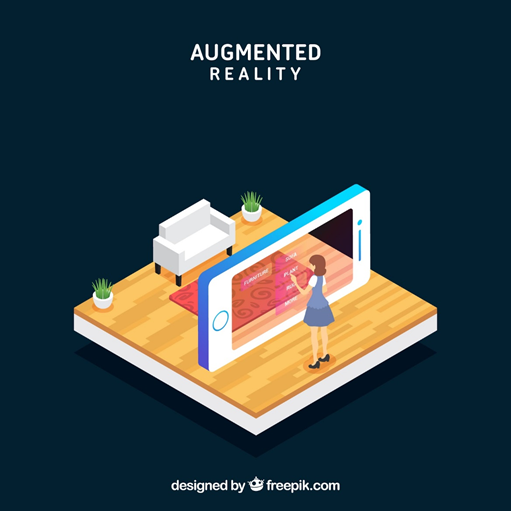
5. Builds a Brand
With Augmented Reality marketing companies can pitch indirect sales. AR is relatively new for most people. Therefore, a well-crafted augmented reality marketing strategy can get people talking. The kind of exposure that AR provides can be rewarding for any brand and can pay lasting dividends.
One such example of augmented reality marketing strategy is the Pepsi campaign situated at a bus station. Pepsi allowed the users to access an AR virtual window situated alongside the bus station’s wall. Users could see the visuals of tigers, UFOs, and even robots running loose within the AR vista. By leveraging the augmented marketing strategy, Pepsi managed to generate discussion and strengthen their brand.
Similarly, Uber has followed a similar campaign in Zurich, creating AR experiences for their riders. With this augmented marketing strategy, Uber generated more than one million YouTube views since then.
Wondering how to plan a social media campaign using AR? Let’s help you formulate a marketing strategy.
6. Product Service with Augmented Reality
Service support is another area where AR can excel at delivering results. AR can solve complex problems, particularly when it comes to service agreements for software or hardware. Self-service knowledge base apps can do this. This can ease the client experience since they can view interactive augmented reality applications that provide them the information they need.
Getting ahead of potential client questions or required training by implementing an augmented reality support system demonstrates confidence, leading to a continued partnership. By driving forward collaboration using technology, businesses can secure prospective client loyalty by merely providing the best experience possible using AR.
7. Deeper Engagement with Rewards
Studies show that AR marketing stimulates increased levels of attention in the brain compared to anything else. Research conducted by Zappar and Mindshare shows that AR delivers a 45% higher level of visual attention.
7-Eleven is one such successful example that has used AR marketing to boost engagement. Specifically, the usage of its rewards app. One of their campaigns – which involved a tie with Deadpool 2 (the movie), allowed users to experience AR by scanning codes in-store. This increased interaction with the in-store experience and successfully drove engagement on the app. The campaign generated over 3.2 million interactions. This sets a popular example for other brands to implement AR models for their businesses.
These were some of augmented reality marketing examples that are popular today. But will the future in this space be bright just like today? Let’s find out.
The Future of AR Marketing
Over the past decade, in AR marketing there have been several AR ventures which are heading strong still. These ventures have also paved a way forward to others in the industries, and now AR is in every sector of the business world.
More and more companies are adopting Augmented Reality technology to provide a vivid experience of their products and services to their customers. This also means that this is not just a marketing gimmick but also a psychological tactic to subliminally remove the barrier of fantasy and bring it to reality in the mind of a buyer.
This gives reason to believe that AR has the potential to dominate the territory of ecommerce as it makes access to perceiving the product more accessible. It is a fact that companies that invest in AR in marketing reap the benefits of viewing the world in a new dimension while also enjoying the fruits of their investment.
7 Benefits of using Augmented Reality in Marketing
These statistics, researches, trends, and prognoses denote that the augmented reality technology is entirely suitable for Marketing. Below are some popular ones that augmented reality can bring to your business if you decide to implement it. Let’s have a quick look at the benefits of augmented reality in retail market.
1. AR Creates a Rich, Immersive, and Interactive UX.
Augmented reality enables users to give a personal touch to the products that they’re willing to buy. Moreover, it is also more informative than the usual in-person customer experience. Plus, they can get everything they want in a few clicks just by sitting at home.
2. Personalized Content Tailored to a User’s Specific Needs is adopted Fast.
We are adopting technology faster than ever. For instance, the telephone beginning in 1900 reached 50% of the US households in several decades. In contrast, cell phones achieved a 40% penetration rate in just ten years of its introduction. Similarly, the adoption of AR will also be at lightning speed. Perhaps, the main benefit of AR is that it creates value instantly through personalized content and is easy to implement in new business models.
3. AR allows Readers to Connect with the Published Content.
Augmented reality is advantageous in the area of publishing. AR can bring life to the static content and boosts it with extra information.
People who scan brochures and catalogs with an AR app are more likely to make a purchase. One such example is of Disney that projects characters from the coloring book while you are still working on them.
4. Augmented Reality can reduce Language Barriers
A theatre in Paris along with Atos and the French start-up Optinvent created an AR solution where audiences were able to see subtitles simultaneously with the theatre show. This served as an intersection of cultural events and technology. Other entertainment industries such as sports games or concerts are also likely to see these. You will be surprised to know that the augmented reality gaming market is expected to touch an aggregate of $284.93 billion by 2023.
We might be able to replicate the face-to-face human interaction on the internet shown in the science fiction movies with AR soon. Therefore, augmented reality may fill this missing physical contact with another person.
5. Increase in Brand Awareness via Social media Sharing.
Marketers fear that their brand message will get ignored. They constantly keep asking themselves ‘‘To which extent are people aware of our brand?’’.
Augmented reality is the new medium for increasing brand awareness. This is because they have the personalized characteristics of social media. On social media people can experience content on a deeper level due to direct access and the first-person perspective.
Celebrity brands also benefit from AR. One such example is Michelle Obama’s 360-video about healthy routine that the Verge created. Paul McCartney’s 360-video also did not go unnoticed. With the help of the video fans could experience being with Paul McCartney live on the stage.
6. Huge Impact on Customer Buying Decisions.
Marketers can activate certain metrics over the consumer interaction. This can lead to giving more heads up in their buying decision and increase sales.
Sales is one of the ultimate purposes of any efficient and scalable business. Another goal is satisfied customers who will come to them again and again. Brands that use these technologies creatively can keep setting a new standard of surprise for their customers and can be the first choice of their customers always.
7. Understanding User Behavior.
Marketers have always been interested in how people make buying decisions. Plato’s famous quote says, ‘‘Human behavior flows from three main sources: desire, emotion, and knowledge.’’ Same goes for marketing.
Because augmented reality solutions provide integrated analytics and insight of the web and social media. This in turn can help identify and study consumer behaviour and generate consumer models. This is possible because of the intuitiveness of AR.
Getting started with AR app development
The advanced future of shopping has already begun. While this technology is developing rapidly, there is no time to wait. This might eventually lead you to plug and play. It is important to consider some key principles before you start working on augmented reality in retail market.
Parameters to Consider while Developing an AR app
Here are some parameters that you must consider before starting the development of your AR app.
1. Context
Deciding a context for each and every app is this first and foremost thing to do. Decide a context where your customer would find an AR shopping experience at its best. Understand the specific needs of your customers, select one such need that you want to address and stick to it. Consider opportunities to render this technology to help with product customization.
2. Use Cases
Start with a discrete, measurable use. Focus on one product or group in the beginning. Later on, you can assess the impact of this technology and build knowledge to help you scale.
3. Delivery Platform
Choose your delivery platform. Think about which store will you launch your app on. Does it fulfil the app-store requirement? Brainstorm other such questions like: What kind of app will it be? Who will be able to access the app? Will you charge your apps per download or will you make it accessible to everyone for free?
4. Overall Plan: Develop a Road Map
Plan a map of the measured benefits, anticipated costs, and workflows. Also, do not forget to consider the intangibles (for example, speed to market) on both sides of this equation.
Given the complexity and advancement of technologies behind augmented shopping, you shouldn’t delay exploring its benefits and building their knowledge in this area. If you are not discovering the many ways AR marketing can change businesses today, you may find yourself lagging before you know it.
Monetization using Augmented Reality
The whole concept of Augmented marketing is selling not only a product but so much more than that. It is about selling an experience. But, how do you create growth out of it and monetize these engaging experiences? Can traditional business models even deliver into the AR space?
Monetizing Augmented Reality can be a huge challenge. It is important to note that everything depends on the type of app and particular situations. A traditional model may or may not work for your AR app. However, here are some general things that might help you monetize it regardless of its unique features.
1. App Monetization using Freemium Model
The Freemium model is the most suitable model to monetize AR apps. It allows users to discover some features of the app for free. But users have to pay a one-time fee or purchase a subscription to unlock certain premium features.
In other words, app users get to access the app for free. They cannot approach the full functionality without purchasing a paid version. However, the premium features must be well working and good enough for users to pay for them.
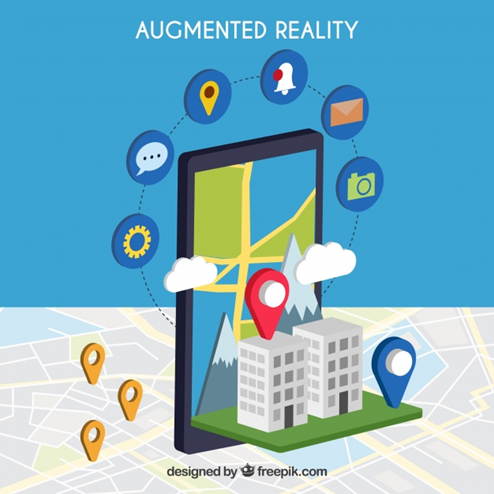
2. Location-Based AR in Driving Awareness, Adoption, & Revenues
Location-based AR experiences help earn a considerable amount of money on a global level. Companies such as the Void are one of many to leverage mixed reality simulations. They have had the Star Wars experience in a few selected places in the US and UK. This turned out exceptionally well for their revenues. Location-based AR and gaming apps are a massive market for the potential to tap within the AR space.
3. Non-Gaming Models
High-quality 360-degree videos have emerged dramatically in marketing and storytelling. Research shows that such videos provoke consumers to watch and interact. These videos also gain a large amount of share, subscribers, and views.
4. E-commerce
E-commerce and augmented reality are the best combinations ever to exist. Thanks to its power to over impose objects into perceived reality, AR can bring different products into real life. Customers can experience the vibe before deciding to purchase them. A more exciting feature would be buying them on the app, just like In-app purchases. Since in-app purchases are a huge trend in mobile app development, a one-click purchase would prove to be a complementary strategy to your app’s AR feature.
Summing it up!
Augmented marketing sounds incredibly tempting. In order to implement AR for the profit of your company or to your marketing strategies or to gain the popularity of your app, you first need to define your goals and needs and see which areas call for optimization. After defining the issue, you will be able to develop a suitable solution and then implement AR to it.
An essential thing about AR apps is the quality of your app performance. It is one thing to implement the AR technology and another to make the app UX smoother and bug-free. Make sure that you work with experienced developers. Experienced developers can ensure AR integration along with a high-quality user experience.
The core of the app must link with the core of the marketing strategies. It needs to be studied from the user’s perspective, and the overall experience has to be maintained. In short, it should have a personalized touch and should sell. Biztech Consultancy services are one such service that gives a personalized touch to all their products. If you want an AR app solution that best fits your business needs, we can help you build a perfect app. That is not all; we can also help you with the most relevant monetization strategies. We specialize in mobile app development for both platforms: Android as well as iOS and cross-platform apps.
Get in touch with us for any queries that you may have. We’re happy to help!
